Textures of nature: Michigan native plants with interesting foliage
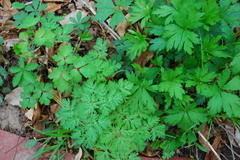
Some fancy native foliage
Rick Meader|Contributor
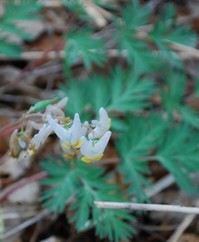
Dutchman's Breeches (Dicentra cucullaria) flower and foliage
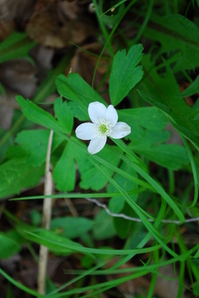
Canada Anemone (Anemone canadensis) and its single bloom
Apparently, given the right soil and competitive conditions, they can be kind of aggressive, and form an extensive colony. This can be good or bad, depending on your needs and perspective, but consider yourselves alerted. I can personally testify that this has not been a problem in my garden, but this may be more of a testament to my soil than the plant’s competitive abilities. Native Americans would use it for a lot of ailments, among them a wash for sores, a treatment for crossed-eyes and eye twitching and as a treatment for lower back pain.
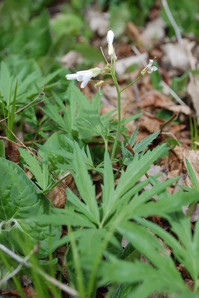
Cutleaf Toothwort (Dentaria laciniata) and its cut leaves
Rick Meader|Contributor
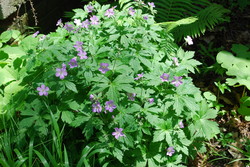
Wild Geranium (Geranium maculatum) and its multitude of blooms
Rick Meader|Contributor
Last, but not least, is Wild Geranium (Geranium maculatum). I’ve said it before about other plants, and I’ll say it again about this plant. It’s one of my favorites. It’s a hardy plant with five-lobed leaves with cut edges. The leaves hold on all summer and turn a very nice shade of red in the fall. The plant forms a clump that gets to about 18 inches tall and wide. Mature plants produce many five-petaled lavender/pink flowers and spread via seeds that pop out of their seed pods when they dry. This is a great landscaping plant, providing color in two seasons, and great texture in three seasons, and likes a range of sun conditions, from bright sun to partial shade.
Marshall Park, at the northwest corner of Plymouth and Dixboro Roads, had a great display of them when I last visited there a couple of years ago. A Natural Areas Preservation (NAP) crew had removed a great deal of invasive shrubs from an oak forest and the wild geranium responded with an impressive rebound that the additional sunlight triggered. It’s just about to bloom, so take a trip there (or in other oak forests around the area) and see if you can find some. You can also add them to your own garden as it is readily available from Native Plant Nursery and Wildtype Nursery.
Flowers get the headlines, but with these native plants, the texture of their foliage can make for a diverse, delightful bed in your garden, or a special treasure hidden amongst other plants you may have. In any case, they’re fun to look at, and enjoy.
As an ongoing “feature,” I’m going to start listing native species that are blooming in my little yard, just for the record. Currently, I have the following blooming, in no particular order: Canada Anemone, Rue Anemone, Early Meadow Rue, Dutchman’s Breeches, Cutleaf Toothwort, Virginia Bluebells, Pennsylvania Sedge, Graceful Sedge, Wild Strawberry, Spring Beauty, Wild Geranium and Trillium.
Get out and enjoy nature, everyone!
Rick is a local landscape architect with a special interest in all things natural, including native plants and the critters that eat them. You can contact him at yourland1824@gmail.com.


Comments
81wolverine
Tue, Apr 27, 2010 : 4:02 p.m.
Very interesting post! This is a great time of the year to look for spring wildflowers in the local woods too. Being such a strange spring weather-wise, it's interesting that most plants seem to be more or less "on schedule". I'm seeing Trilliums already, as well as some marsh marigolds yesterday. So, it's worth getting outside now and looking around.
Rick Meader
Sat, Apr 24, 2010 : 6:33 p.m.
Thanks! I'm glad you enjoy them.